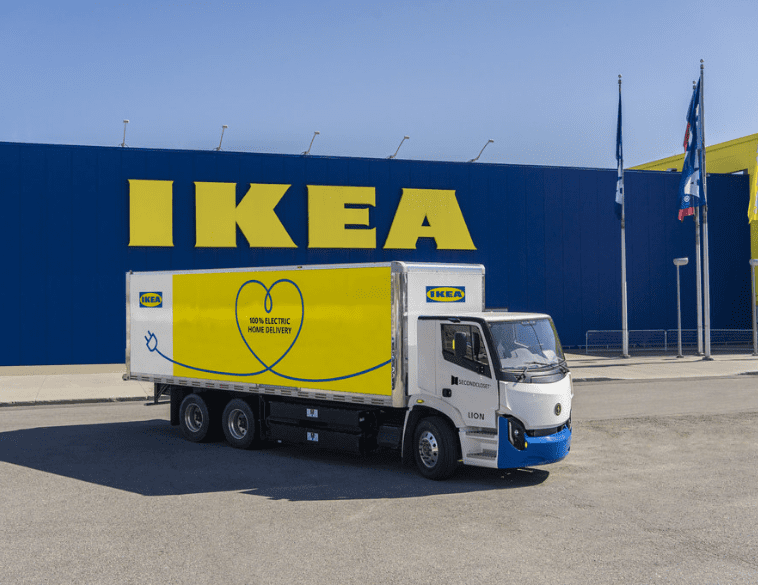IKEA Canada announced that it has taken a first step on the journey to fulfilling its commitment of 100% zero-emission deliveries by 2025.
IKEA Canada has partnered with technology-enabled logistics and last-mile delivery provider, Second Closet, which will begin integrating zero-emission trucks into its fleet for IKEA home deliveries in several markets across Canada.
Second Closet has submitted a purchase order to Lion Electric, for 15 Lion6 heavy-duty zero-emission trucks. The IKEA and Second Closet co-branded five tonne EV trucks that will service last-mile deliveries for IKEA locations in Boucherville, QC, Etobicoke, ON, Richmond, BC are scheduled to hit the streets in Fall 2021.
This will enable IKEA to achieve 20% of its ambitious zero-emission delivery goals. By 2030, the retailer is aiming to reduce more greenhouse gas emissions than the IKEA value chain emits while growing the IKEA business at the same time.
The impacts of the global pandemic are moving consumer purchases online and thereby increasing the demand for home deliveries. It also increases the challenge this poses in terms of pollution, congestion, and noise levels in our cities.
In 2020, IKEA Canada completed over 500,000 home deliveries, a 30% increase from 2019.
“Electrifying our last-mile delivery service is an important step in our journey to become climate positive by 2030, especially with the rapid acceleration of our online business over the past year,” said Michael Ward, CEO & Chief Sustainability Officer, IKEA Canada.
The company widely supports electrification of transportation, providing electric vehicle chargers at all 14 IKEA stores across Canada to halve relative emissions from employees and customers by 2030.



